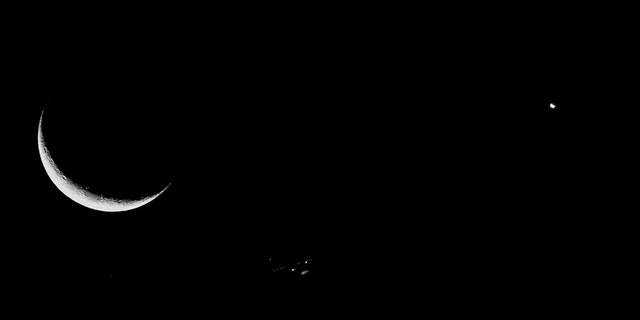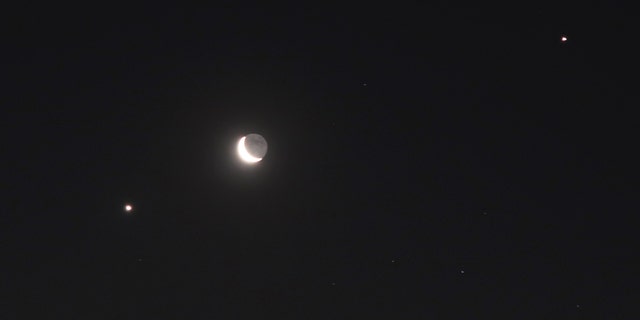The moon and Venus are expected to make a close approach on Wednesday.
Weather permitting, the appulse will be visible from New York between 7:52 a.m. EST and 7:59 p.m. EST, according to In-the-Sky.org.
An appulse – an angular coincidence – is similar to a conjunction.
An appulse refers generally to when two celestial objects appear close together, according to NASA.
KANSAS NIGHT SKY LIT UP BY ‘SMALL SWARM OF METEORS’

An airplane, center, is seen between the moon and Venus in Santiago, Chile, on Dec. 6, 2021. (Photo by MARTIN BERNETTI/AFP via Getty Images)
Appulses involving the moon typically occur several times a year.
Simultaneously, the moon and Venus will reach conjunction, according to Space.com.

A trio of bright lights, Venus, a crescent moon and Jupiter align as they rise in the pre-dawn sky over New York City on Jan. 31, 2019, as seen from Hoboken, New Jersey. (Photo by Gary Hershorn/Getty Images)
NASA CONFIRMS HALF-TON METEOR CRASHED IN SOUTH TEXAS
A conjunction is a celestial event in which two planets, a planet and the moon or a planet and a star appear close together in Earth’s night sky.

The crescent of the waxing moon can be seen together with Venus in the evening sky above a pine forest east of Berlin. (Photo by Patrick Pleul/picture alliance via Getty Images)
CLICK HERE TO GET THE FOX NEWS APP
Conjunctions have no profound astronomical significance, but they are nice to view.
